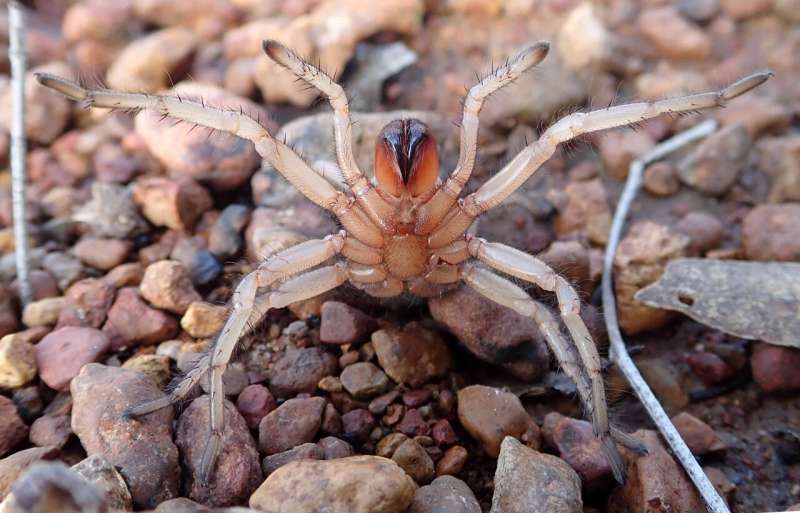This article has been reviewed according to Science X's editorial process and policies. Editors have highlighted the following attributes while ensuring the content's credibility:
fact-checked
proofread
New species of wishbone spiders uncovered in field work

Setting out with a goal to describe over 100 new species of Australian Wishbone spiders, Dr. Jeremy Wilson, alongside Queensland Museum Network arachnologist, Dr. Michael Rix have traveled thousands of kilometers in eastern Australia to collect 136 specimens over the last six months.
The pair are preparing to describe up to 40 new species of spider from Queensland as part of a year-long project to revise Australian wishbone spiders.
"I think Queensland has been a huge surprise for us in terms of total diversity, we already knew that there were lots of species in the west, but it turns out eastern Australia is almost as diverse," Dr. Wilson said.
"All this information will be included in our revision of the eastern Australian wishbone spiders and will help us understand and protect them in the future."
Wishbone spiders are burrowing spiders that live throughout dry and tropical regions of Australia. They are called wishbone spiders because many of them have two entrances to their burrow—a main entry and a second hidden entrance that the spider uses as an escape chute. These two entrances give the burrow a y-shape like a wishbone.
"As well as discovering this incredible diversity, prior to the fieldwork we didn't really understand the amazing variety of behaviors exhibited by wishbone spider species in Queensland, with the spiders constructing a variety of different silken burrows and occurring in different habitats," Dr. Wilson said.
Dr. Wilson spent the first 12 months of the project based at Queensland Museum working alongside Principal Scientist, Dr. Michael Rix.

"We are working to submit our first paper, on the eastern Australian sub-tropical and tropical wishbone spiders, by the end of 2023," Dr. Wilson said.
Dr. Wilson will now relocate to Western Australia and be based at the Western Australian Museum and the University of Western Australia for the final two years of his Fellowship.
Dr. Rix, who is a Joint Investigator within the project, will continue to collaborate on the project from Queensland Museum.
"This is an amazing project to be a part of, with a principal aim of performing a complete taxonomic revision of Australia's most diverse genus of mygalomorph spiders," Dr. Rix said.
"Using molecular sequencing we will be able to study the evolution of the group across Australia, which is very exciting."
Queensland Museum Network CEO Dr. Jim Thompson said understanding the diversity of species is key to protecting them in the future.
"It's been a privilege to host Dr. Jeremy Wilson at Queensland Museum for the first year of this important three-year project," Dr. Thompson said.
"His field work has contributed new specimens to the State Collection, including new species to be described, which will assist researchers for years to come."
Provided by Queensland Museum

















